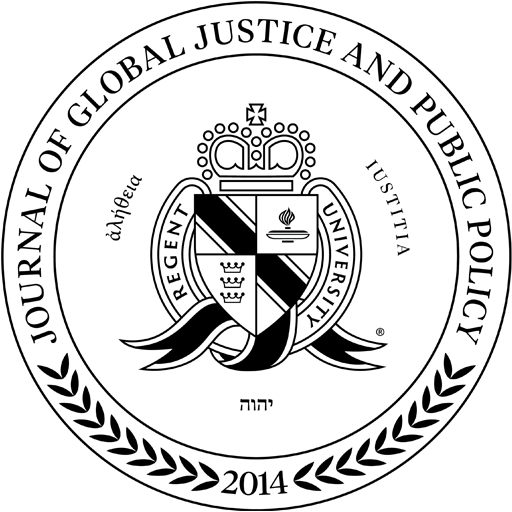Jennifer L. Gebler† | 3 Regent J. Glob. Just. & Pub. Pol. 281
INTRODUCTION
In 1993, Proposta de Emenda à Constituição (Proposal of Constitutional Amendment) 171 (PEC 171) was proposed in an effort to combat what was seen as a rise in violent crime committed by Brazilian youth.1 If ratified in its original form, PEC 171 would reduce the age of criminal responsibility in Brazil from eighteen to sixteen years old. 2 While the Amendment did not gain traction when first introduced, 3 recent highly publicized juvenile crimes brought it to the forefront of Brazilian legislation in 2015. 4 The Amendment has since garnered a considerable amount of congressional support despite being fiercely condemned by the Brazilian president.5
The Brazilian government continues to debate the advisability of adopting the Amendment. 6 Pending a formal ratification or rejection of PEC 171, this Note addresses the potential implications of adopting such legislation. Specifically, the similarity of the proposed Amendment to the current statutory guidelines permitting the transfer of juveniles to adult court in Virginia, allows for the application of a comparative criminal justice analysis.7
This Note contends that, based on decades of research citing the negative impact of juvenile transfer in Virginia, 8 Brazil should reject PEC 171 and instead strengthen its existing system of juvenile justice. Part I provides an overview of the social and legal context of juvenile justice in both Brazil and the United States. Part II addresses juvenile transfer in Virginia and its attendant consequences. Part III argues for the use of a comparative justice framework when examining the impact of transfer laws in Brazil. Finally, Part IV analyzes the potential consequences of reducing the age of criminal responsibility in Brazil and provides germane policy suggestions. Based on evidence from decades of research on the impact of transfer in Virginia, this Note concludes that the ratification of PEC 171 in Brazil will result in far-reaching, and likely unanticipated, negative consequences for both the Brazilian population at large and the Brazilian youth subjected to adult prosecution.
I. BACKGROUND
A. Constitution of Brazil
Largely due to the evolving nature of the Brazilian government, as well as several coups which resulted in brief periods of authoritarian leadership, Brazil operates under its seventh Constitution. 9 The Constitution is “federative” in that it grants “greater legislative (and unifying) authority to the central government with state legislation following national direction.” 10 The Brazilian Constitution is “the supreme law of the land . . . [and] binds all public actors, all state departments and all powers.” 11 As contrasted with the United States Constitution, the Brazilian Constitution is expansive and enumerates a wide array of social and political rights, including the rights of children.12
Though only in force since 1988, Brazil’s current Constitution already includes ninety–five amendments.13 The amendment process in Brazil first requires a proposal by either “the President; at least one third of the members of the house of representatives; at least one third of the members of the Senate; or a petition of more than half of the Brazilian states [sic] legislature.” 14 Following the proposal, “a two-fold reading in both houses as well as the approval of at least three-fifths of both houses” is required.15
† J.D. 2017, Regent University School of Law; M.A. 2011, Old Dominion University. Special thanks to Professor Lynne Marie Kohm for her guidance, advice, and calming presence.
1 Sam Aman, Selective Adulthood: Brazil Moves to Lower Age of Criminal Responsibility, COUNCIL ON H EMISPHERIC AFF. (May 29, 2015), http://www.coha.org/selective-adulthood-brazil-moves-to-lower-age-of-criminalresponsibility/. The original proposal by Congressman Domingos also suggests that modern juveniles are more mentally developed than the youth of previous decades and are therefore capable of understanding the consequences of their actions. Id.; see also Ministério Público, PEC 171/1993, http://www.mprs.mp.br/infancia/legislacao/id2658.htm (translation on file with J. Global Just. & Pub. Pol’y) (last visited Mar. 6, 2017).
2 Aman, supra note 1.
3 Id. It has been noted that PEC 171 likely did not “pass the necessary congressional hurdles” when first introduced because the political composition of congress at the time was less conservative. Id.
4 Id. For instance, in 2014 fourteen-year-old Yorrally Dias Ferreira was murdered by her ex-boyfriend two days before he turned eighteen. This case made headlines due to the gruesome nature of the crime; “Ferreira’s killer filmed her bleeding body and spread the footage on the Internet, shocking the country and igniting social media networks.” Id.
5 Id.; see also Associated Press, Brazil’s Congress Reduces Age of Criminal Responsibility to 16, GUARDIAN (July 2, 2015), http://www.theguardian.com/world/2015/jul/02/brazil-age-of-criminal-responsibility-16 [hereinafter Brazil’s Congress Reduces Age of Criminal Responsibility to 16].
6 See Aman, supra 1; see also Brazil’s Congress Reduces Age of Criminal Responsibility to 16, supra note 5.
7 See discussion infra Part III.
8 See discussion infra Part II.
9 Jesse Burgess, Comment, Let them Eat Cake: Constitutional Rights to Food, 18 WILLAMETTE J. INT’L L. & DISPUTE RES. 256, 268 (2010); see also Brazil – Legal History, FOREIGN LAW GUIDE [hereinafter Legal History], http://0-referenceworks.brillonline.com.library.regent.edu/entries/foreign-law-guide/brazil-legal-history-COM_037301 (last updated Oct. 19, 2015).
10 Legal History, supra note 9.
11 Nick Oberheiden, Law of Brazil, OBERHEIDEN L. GROUP,
http://www.lawofbrazil.com/ (last visited Dec. 30, 2015).
12 See generally CONSTITUIÇÃO FEDERAL [C.F.] [CONSTITUTION], translated in Brazil’s Constitution of 1988 with Amendments through 2014, CONSTITUTE (Keith S. Rosenn, trans.), https://www.constituteproject.org/constitution/Brazil_2014.pdf (last visited Mar. 6, 2017) [hereinafter Brazil’s Constitution of 1988].
13 See Emendas Constitucionais [Constitutional Amendments], P RESIDÊCIA DA REPÚBLICA , http://www.planalto.gov.br/ccivil_03/Constituicao/Emendas/Emc/quadro_emc.htm (last visited Mar. 6, 2017).
14 Oberheiden, supra note 11.
15 Id.
